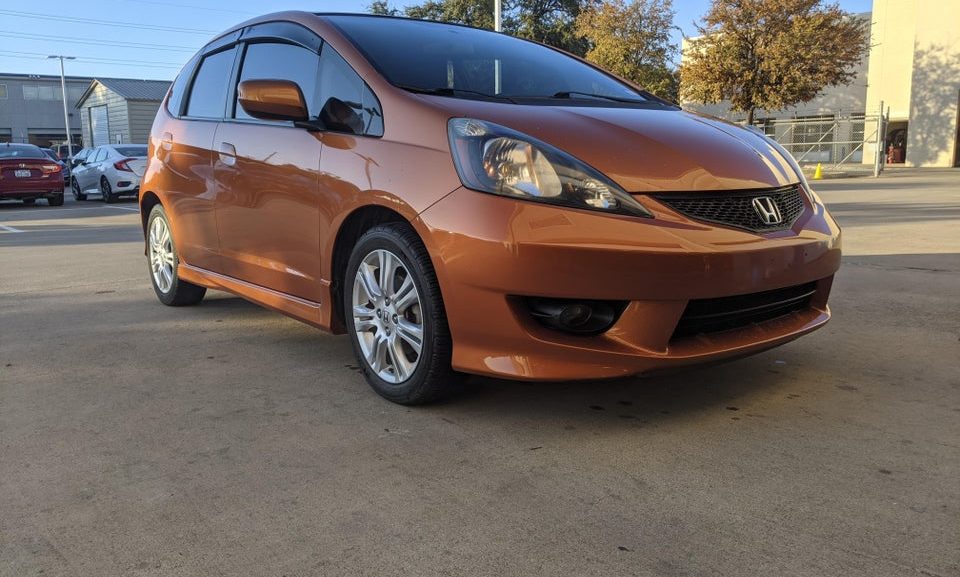Honda Fit is the winner in case you are shopping for a great sports car on a tight budget. Though comfort is something you would have to sacrifice for a friendly-price, it’s quite roomy for a small car. It’s also known as the Honda Jazz – a leader in value and quality of fuel economy among small, hatchback cars.
The Five Honda Fit Generations
Honda introduced the subcompact car in 2001 as Fit in; Japan, the US, and China, but sold it under the name Jazz in other markets. There has been five generations up to date with three types of engines; petrol, diesel and hybrid.
- Honda Fit (2001-2008): The L-series consist of only four engine choices. The lowest and highest specs being 1.2L and 1.5L. The engine power is distributed manually or automatically in 5-speed gears plus continuous variable transmission (CVT).
- Honda Fit (2007-2013): Three engines are launched. The most unique is the hybrid version. It hosts an electric motor and 1.3L engine with an estimate fuel economy of 100 kilometers per 3.3Litres.
- Honda Fit (2014-2017): Speed transmission is manual with 5 or 6-speed gears on a 1.5L engine. A 1.5L turbo diesel engine is introduced. The 1.5L Hybrid version uses a 7-speed gearbox with a two-clutch system that allows changing odd and even gears without affecting speed.
- Honda Fit (2018-2020): The dual-clutch system is replaced with an electric system of series. The lowest petrol engine spec is at 1.3L with the highest at 1.5L. Transmission is CVT or hybrid
- Honda Fit (2020-Present): Only hybrid features are witnessed under the bonnet. The 1.3L (99 horsepower) petrol engine is reinforced by electricity to produce more power at 109 horsepower.
Superb Fuel Economy
Gas mileage depends on how you drive your Honda Fit, and if it’s CVT-equipped or manual.
If your Fit’s transmission is manual, the 1.5L engine uses one gallon of gas equivalent to 3.7 liters for every 46 kilometers in a city, and 60 k/3.7L on a highway. CVT-enabled estimates are 53k/3.7L and 64k/3.7L city/highway.
The car, however, will be most efficient when driven long distances on an average of 100 kilometers per hour.
Acceleration and Performance
All Honda Fit models come with a 1.5L engine that transmits power through CVT or a selection of manual transmission.
The standard six-speed manual gear produces 130 horsepower whereas CVT ranges at 128 horsepower. Now, this is a minor difference in output but obviously a manual setting is highly recommended if you need to maximize on engine power.
Front-Wheel Drive Champion
Every Honda Fit’s transmission system is placed at the front to give the car’s front wheels controlling driving power. This is suitable for such a small car because it allows greater stability in steering its wheels to follow the exact direction you aim.
Fit Body
All cars are five-door hatchbacks available in any of the four classifications: Sport, LX, EX, and EX-L. The first two have a manual transmission of six-speed gears while the EX versions are CVT-controlled. 15 -16 inch steel or alloy wheels go hand-in-hand with a stable steering system whose wheel is wrapped in leather.
Flexible, roomy interior
What’s to look out for is the multi-folding rear seat that allows you to pack wide or long parcels accordingly.
Mind you, your fit will easily accommodate five people on its leather seats with the front ones having the capacity to be heated. Child seat latch connectors are visible on the outboard along the back seats.
Smart devices to help you navigate smoothly include: an infotainment screen, Bluetooth and USB devices, an audio stereo, among other useful plastics.
Safety Features
Honda Fit gets good traction since most of the weight is placed on its front-driving wheels.
In addition to the high-light headlamps, there is a rearview camera plus sensors to help you: notice rear objects, not go off-road involuntarily, maintain your lane, avoid collisions ahead, and brake emergently.
Honda Fit Pros & Cons
Pros
- Rare steering complications due to good stability of front wheels.
- Exceptional fuel economy.
- Adjustable cabin to hold more cargo.
- Reduced bonnet size and increased passenger room resulting from a horizontally mounted engine.
Cons
- Unfavorable to tall people
- Slow brake-performance compared to competitor hatchbacks.
- Tedious acceleration due to CVT.


